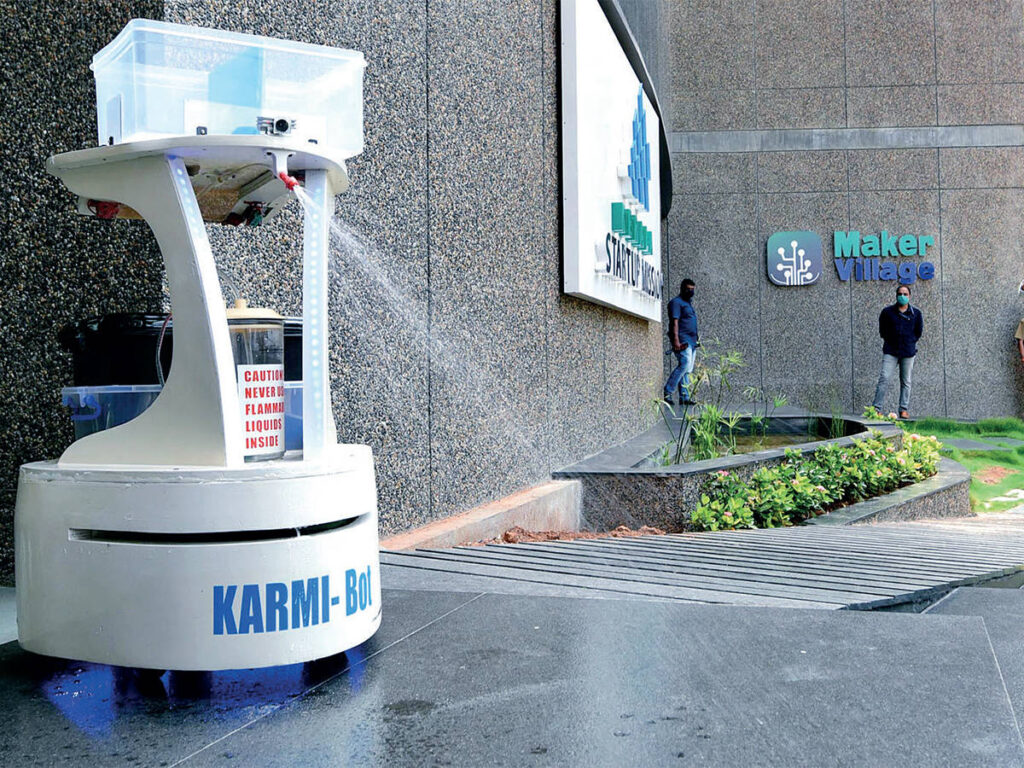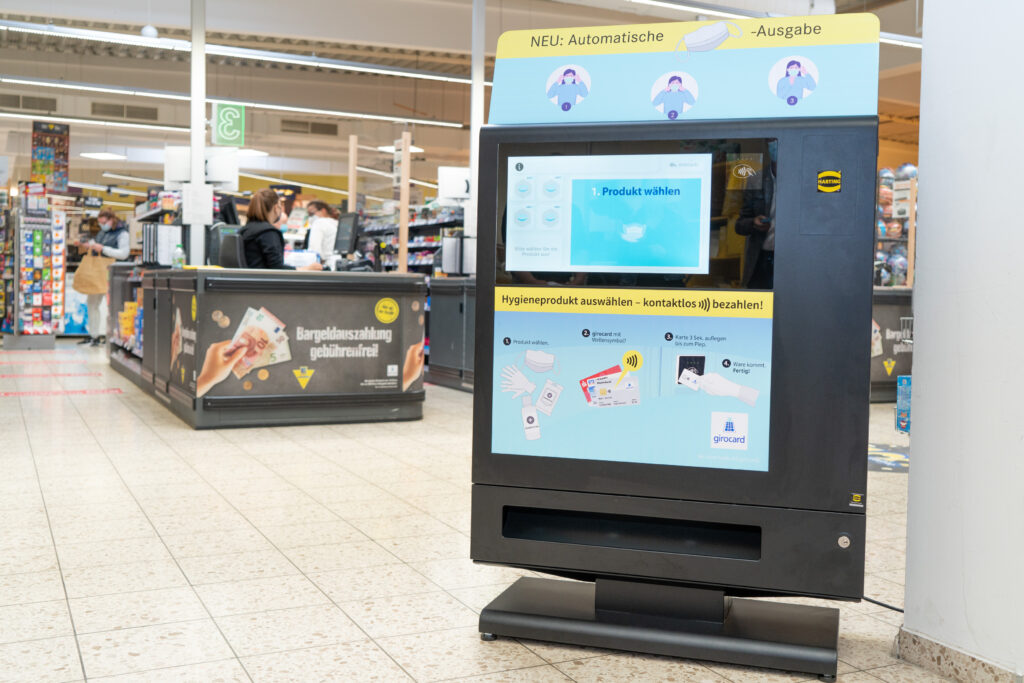The consequence of Covid-19 pandemic on human, social, economic and National Health has largely impacted almost every country across the globe. 213 Countries and Territories around the world have reported the spread of this highly contagious disease. The nature of transmission pattern of spreading of corona virus is yet to be established. There is an urgent need for understanding the growth pattern for human-to-human transmission, for developing the control strategies to stop/break the link for further transmission. Labs and research organizations are studying around the world to develop the vaccine to protect spreading and medicine to cure the patients.

As the number of corona cases growing in the country the demand of hospital facilities, healthcare workers/staff, nurses and doctors for treatment of such a large number of patients is rising. The doctors, healthcare workers/staff and nurses are the first entities exposed to patients, who are equally venerable to get affected by Covid-19.
This pandemic has created heavy disruptions in medical supply chain and changed workplace practices during product manufacturing in factories by maintaining social distancing while on work. Manual tasks normally undertaken by staff have suddenly become unsafe due to the possibility of virus transmission. With the changing times, just like other technologies, robots are also playing an important role in the fight against diseases. The robotic technology can play a crucial role in not just assisting the patients but also keeping the doctor and healthcare staff safe.
Robotics industry has the shown the potential to offer real value by providing safe work environment without loss of production. Innovative robotic applications have created value to support the present requirements. Robots help execute tasks without human-to-human contact with increased efficiency:
1. Use of robots for medical support systems to fight against Covid-19.
2. Robotic applications for machine operation a where tasks cannot be done by humans due to social distancing norms.
Interactive robot placed at the entrance to screen everyone, including medical staff, support staff while entering at the premises. The robot has features for face and speech recognition of people. It can ask questions and use thermal scanners to take temperature reading. Once screened and cleared a person, it issues a pass ticket with window/cabin number and allows entering into the hospital as general patient.
If the robot detects higher body temperature, it will raise alert to the doctors an
d issue different pass that allows entry into restricted gate for Covid treatment. In this cabin the patient can consult a hospital doctor directly through the screen on the robot. Cobots are used for briefing the procedure and general guidelines to new patients at the entry by audio-visual aids.

Adoption of robots/cobots to interface between Covid-19 patients and medical staff is expected to grow. Covid-19 being a highly infectious disease requires invulnerability to hospital nursing staff as they are the backbone of healthcare, and often called its heart and soul. They are the first to come directly in contact with patients to check, ward admission and supply medicine. To avoid nurses getting affected with corona, robots are being deployed in hospital to assist these health workers for supplying food, necessary patient hygiene and medicines supply to these patients. A good and regular communication is required to patients for giving them confidence and mental strength to fight with the corona and their health progress. Robots are safe to be deployed, talking to patients and linking bridge for interaction between patients and the nurses.
More innovative aids by way of using Cobot Lab Operators are being tried to check human test samples collected from people to minimise effort of healthcare workers from manual testing. Cobots are collaborative robots, which are intended for direct human interaction within a shared common space.
Mobile cobots provide professional services in hospitals to increase overall level of patient care. These are exclusively manufactured for medical services to improve mobility for interaction between nurses and patients by keeping full hygienic safety. It is possible to improve interaction between doctors sitting in cabin talking to non-critical patients through direct visualisation by camera, speaker and display on cobot moved near to patient. The mobile robot/cobot will come close to patient; call his/her name so that the patient can see the doctor/nurse on the display. Patient can explain the symptoms, and take advice from the doctor. The doctor can directly recommend the medicine from his digital device, which is also digitally reflected on nurse’s display interface to consider prescribed medicine or using the existing medicine at different interval and instruction for other support to be considered for the patient. The integrated system is connected to online data server, to replenish medicine stock if it level hits low level. Cobots are used to replenish every ward’s medicine stock from hospital main medical stores.
Efforts are being made for more interactive mobile cobots, which have audio/video facility for calling advising patients to wake-up, change clothes, take medicine, facilitate talking to family members and broadcast the doctor’s advice given during routine check-up round. Alert option menus are provided by the cobot to the medical staff and nurses, for patients needing routine medical support, such as delivery of oral medicine, injection or shifting to other ward like general ward/ICU. For critical patients admitted in ICU the health parameters are monitored remotely which alert doctors/nurses for immediate attention to attend patient if real time trend crosses limits. The data shall be directly connected to main server for maintaining medical history of patients and for generating consolidated online billing on discharge.
For disease prevention, non-contact ultraviolet (UV) surface disinfection rrobots are being used because Covid-19 spreads not only from person to person via close contact respiratory droplet transfer but also via contaminated surfaces. Cobots are deployed to disinfect the floor in and around the isolation ward, sample collection lab and hospital premises, without human intervention.
Appropriate safety measures are required to keep laboratory staff protected, while producing reliable test results. AI added facilities are being developed where samples are placed at receiving point with bar code identification of patients and complete testing is done automatically by test machine without human intervention to produce printed result and simultaneously store data at server.
New robotic functions are being developed to overcome the lockdown restrictions and no visitor policies in hospitals with family members enabled to talk to patients through robots having audio visual facility. The robot moves close to patient in fixed time slot and connects with family members at their home remotely using predefined different apps like Zoom cloud meeting, ezTalks cloud meeting, skype, GoToMeeting, WhatsApp, Google Hangouts, Ekiga and so on, through wifi to their laptop or mobile simultaneously from many places of city/states/international location. The ailing patient will have opportunity to speak with their near and dear ones without moving to other location. Connecting to the patients when they are possibly in the last few days of their life is an emotional need in the absence of physical meeting. Facilities are developed to make it easy like connecting a call, the free available robot will instantly move to the desired location, call elderly sick patient on bed for talking with caller from remote. These are software based applications, easy to use by the caller.
Making use of Industry 4.0 technologies, high speed data collected through IIoT can be processed to produce high accuracy results by advanced analytics. This facilitates to identify trends, patterns, location, intelligent forecasts about the spread and load of the Covid patients in different hospitals. Businesses should focus on building/improving IIoT capabilities by AI and processing large data to logically derive opportunities from these new challenges.
Robotic technology at present is expensive for broad adoption across all types of healthcare systems in many countries. Demand is expected to grow in India having large population due to very less number of healthcare trained staff per lakh presently available. Extensive work is being done for the development of a robot designed to perform several crucial tasks, wherein it checks and flags patients having fever symptoms at the entrance to the hospital, monitoring heart beat rates, check blood oxygen levels, and even guide patient admission process taking them to hospital wards. Recently in China medical research teams are working for improving the capability of robot for Covid related essential tests like taking mouth swabs, check heartbeat, listen/record sounds generated for patient’s organs and even for carrying out ultrasounds. The camera on the robot gives direct visual information to lab personal testing without coming in same room and close to infectious patients. The ongoing crisis has initiated the investor/research scientist to grasp the importance of many of the emerging technologies such as 3D printing, drones and robotic labs.
Social distancing guidelines posed another challenge to manufacturers, those who have to depute their team personal on machine maintaining Covid safety guidelines to keep the production wheels moving. Many factories are producing essential PPE kits, medical
equipment and ventilators. For manual machines these tasks are extremely difficult to execute. Factories have to manage with reduced output by splitting production into shift operations for maintaining safe physical space among employee. Factories having AI driven automated facilities by use of robots are adapting physical distancing more easily, provide agility and flexibility in production line.
Robot projects are being designed to help elders in western countries. Medical fraternity believes the breakthrough in cobot/robot development could help in dealing with future new disease outbreaks similar to the on-going pandemic. A professor of Edinburg’s Heriot-Watt University recently is reported to have said: “People can imagine in the future that when they walk into a hospital waiting room, instead of encountering a person, people will encounter a robot that is able to help them.” It will suffice the requirement of hands-free, touch-free speech interface, which will be going to be more in demand. In the US, the Covid-19 patients are being kept in isolated areas where doctors are taking the help of a robot, which is equipped with a microphone, stethoscope and camera. This way, doctors are able to treat patients without coming in contact with them directly.
Deploying robots for corona treatment to reduce human direct contact is being tried in many countries. In China during pandemic they deployed multiple robots for almost everything from screening people while entering hospital, delivering food and medicine in isolation/treatment wards and entertaining patients. Robots were also being used to spray disinfectants and clean hospital floors. The primary requirement for sophisticated robots is high manoeuvrability and zero failure.
Using robots for situations where doctors/medical staff need to enter and exit a patient room frequently can be largely avoided, which saves the hospital on supplies such as face mask, gowns/PP kit, sanitizer, and gloves each time they need to replace.
Robotic applications are now playing an important role in hospitals and factories during this pandemic time, where risk of disguised virus transmission affected large population of the world. This need is steadily growing in business to manufacture an automated environment for quality consistency and higher productivity. Looking into the benefits, robots are now widely accepted in the scalable manufacturing, warehousing and logistic supply chain. Government policies are encouraging Indian companies to strive more for resilient supply chain within country.
The only way to compete with international market will be via digital transformation and Industry 4.0 automation. Successful companies agree to accept digital transformation, shall take this pandemic as an opportunity to learn the way forward by implementing highly automated manufacturing required to combat major disruption if any in future. This will also improve agility and resilience in all ghost disruption.

SeeGlobal International
Gurgaon, Haryana, India
Design and Development Office
Seeglobal International
Plot No. 53 – 54, Sec 16
Noida (UP) India 201310
Subscribe above to receive our eNews, featuring scientific research, new products, and exclusive
promotions. You can easily unsubscribe at any time. Sign up today!